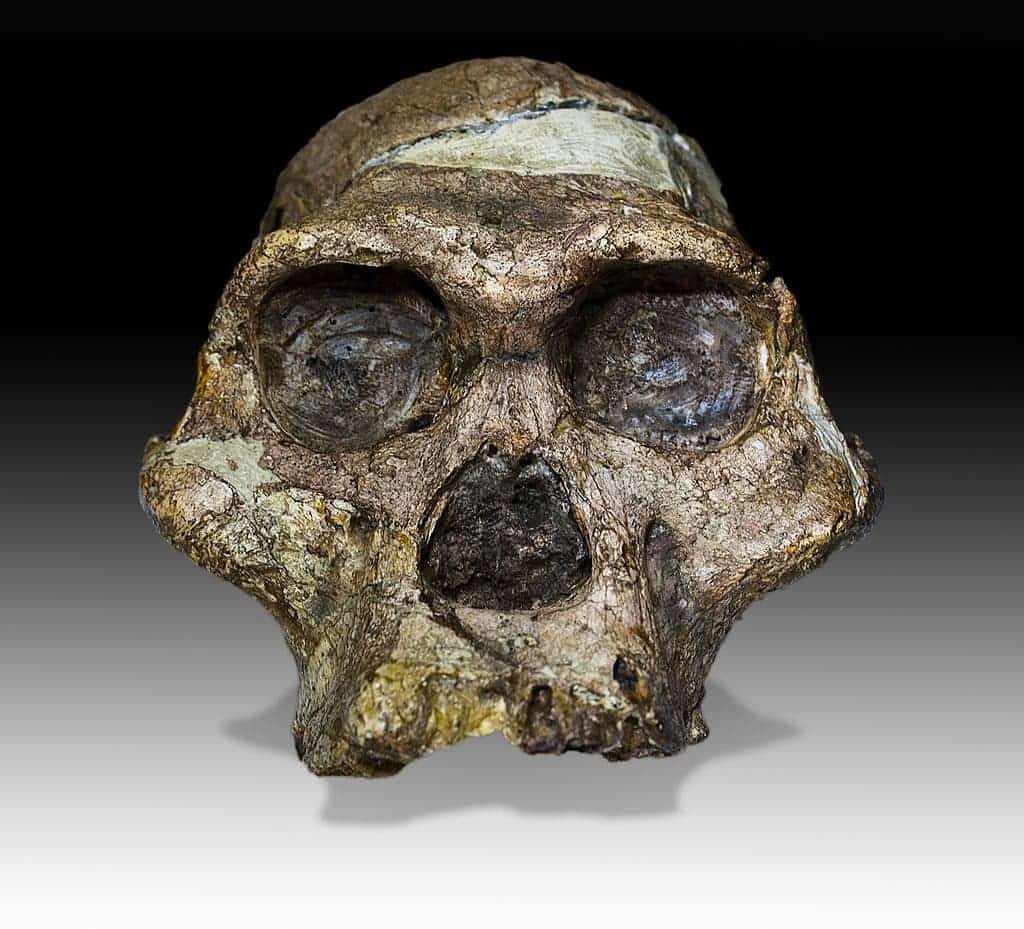After analyzing key hand bone fragments from fossil records, a team of anthropologists conclude that pre-homo human ancestral species, such as Australopithecus africanus, used a hand posture very similar to that of modern humans. Considering fossil tools used for scrubbing off meat as old as 3.3 million years have been found, it may just be that our early ancestors weren’t all that different from good ol’ superior homo sapiens sapiens. Well, as far as hands go at least.
A handy ancestor

Like humans, chimps have opposable thumbs and opposable big toes which allow them to grip things with their feet. Yet, our close cousins don’t possess what scientists call a habile hand, since theirs haven’t been freed from walking requirements. As such, the evolution of the opposable or prehensile thumb is recognized by anthropologists as being linked with two key evolutionary transitions in hand use: a reduction in arboreal climbing and the manufacture and use of stone tools.
[RIDDLE] Which came first: the dexterous hand or the agile foot?
Matthew Skinner and Tracy Kivell of the Max Planck Institute for Evolutionary Anthropology and the University of Kent used new techniques to reveal how fossil species were using their hands by examining the internal spongey structure of bone called trabeculae. These bones quickly reshape during the lifetime to adapt to various stresses. So, for humans at least, you can tell whether a person is a carpenter, construction worker or a computer programmer, just by looking at the trabeculae.

[READ] Why early hominids started walking on two legs

© Tracy Kivell & Matthew Skinner
First, the researchers compared the trabeculae of humans and chimps. As expect, key differences were identified. The chimpanzee clearly can not adapt to human-like hand posture, lacking the ability for forceful precision gripping between thumb and fingers (e.g. like turning a key). Remarkably, a hominid ancestor called Australopithecus africanus, who lived some 3 to 2 million years ago, has a human-like trabecular bone pattern in the bones of the thumb and palm (the metacarpals) consistent with forceful opposition of the thumb and fingers typically adopted during tool use.
What makes this so important is that traditionally anthropologists believe Homo habilis, also known as “Handy Man,” was the first maker of stone tools. The models support previous archaeological evidence for stone tool use among australopiths, meaning the first tool use could be pushed back much earlier than previously thought – we just have to wait for evidence to surface, if any survived the test of time. What’s clear, though, is that our early ancestors used human-like hand postures frequently and earlier than currently estimated.
“This new evidence changes our understanding of the behaviour of our early ancestors and, in particular, suggests that in some aspects they were more similar to humans than we previously thought”, says Matthew Skinner of the Max Planck Institute for Evolutionary Anthropology and the University of Kent.
“There is growing evidence that the emergence of the genus Homo did not result from the emergence of entirely new behaviours but rather from the accentuation of traits already present in Australopithecus, including tool making and meat consumption”, says Jean-Jacques Hublin, director at the Max Planck Institute for Evolutionary Anthropology.

The results are published in Science.


